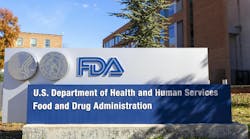In a utopian world, a future-ready Supply Chain model might amount to one that runs itself — fluidly, smoothly, and without hiccup or interruption, stockouts, backorders, price discrepancies and bad or incomplete data figments of the past.
Of course, we’re not there yet as artificial intelligence hasn’t yet replaced human cognition and effort, nor have data-sharing conduits and online access been protected by impenetrable and impregnable cybersecurity measures — and likely will never be — nor have transportation routes been immunized to crises, disasters or clotting traffic patterns.
In short, we still have a way to go before we can scoff at disruption, embrace the idea of supply networks (as opposed to chains and channels) with ubiquitous and unfettered flow of accurate and unadulterated information 24/7/365.
Aside from attracting and training the right kinds of supply chain-minded professionals and steering them along pathways to decision-making in the executive C-suites, healthcare facilities look to their product and service suppliers (including management/operations consultants), information technology and software companies and what supply chain pros are doing in other industries to prepare and succeed.
From purchased services (a trendier term that has absorbed the less politically correct “outsourcing” and “third party [insert specialty here]” terms) to cloud- and computer-based as well as online functionality (software-as-a-service anyone?), healthcare supply chain pros and execs have to work diligently to wade through the smoke and mirrors surrounding the plethora of solution options on parade.
What’s out there, ripe for the picking or needs more germination and seasoning before harvest? Much of what’s available now can be grouped into several categories where the lines between them admittedly can be blurred into overlapping. They are apps for mobile device use, software and equipment. Yet a number of specific products and services are starting to pop out/up from those categories, gaining plenty of attention, interest and media coverage. They include artificial intelligence (AI), augmented reality (AR), blockchain, Internet of Things (IoT) or Machine-to-Machine (M2M) master planning, mobile devices/technology, robotics/”co”botics, 3-D printing and virtual reality (VR), which is different from AR, and that digital/online retail juggernaut Amazon.
“We believe that continual cost pressures will drive the need for system consolidation and leveraging scale,” said Sean O’Neill, Executive Vice President, St. Onge Co. “This will be achieved through the use of Centers of Excellence that perform medical/surgical [supply] distribution functions and process intense capabilities (e.g., Central Sterile, Pharmacy, Central Laboratories and others). With scale, the operations can leverage mature and proven processes, software and technologies, as well as newly developed technologies from other industries.”
Adhering to universal data standards for products and services will be a linchpin to driving success, according to Tom Redding, Managing Director, Healthcare Services, St. Onge Co., something other industries have recognized for some time.
“Other industries (e.g., retail and automotive) are way ahead of healthcare in terms of implementing data standards for product identification, unit of measure, etc.,” Redding said. “This information is essential to increasing the efficiency and effectiveness of healthcare supply chains.”
Healthcare Purchasing News explores both product and service areas through the eyes of observing supplier executives. Check out the sidebar online (www.hpnonline.com/next-generation-supply-chain-hurdles-may-self-destruct-in-five-seconds/) for the “pop-outs,” including artificial intelligence, augmented reality, blockchain, 3-D printing and robotics.
Apps help make tracks
Suzanne Alexander-Vaughn, Senior Product Manager, Product Development, Global Automation & Medication Adherence division of Omnicell Inc.
More people have phones than computers these days, and phones are becoming more ubiquitous every single day. Phones are more accessible (as well as affordable), and advancements in technology have facilitated a growing number of internet-connected global citizens who have access to a global marketplace. This is great for commerce, it’s great for app developers and it’s great for innovation.
Karim Babay, CEO & Founder, HealthSapiens
Jeff Lawrence, Vice President, Business Development, Inventory Optimization Solutions
Steve Downey, Group Senior Vice President, Supply Chain Operations, Vizient Inc.
Lee Ann McWhorter, Strategic Alliances Director, First Databank
We will see applications for locating and requesting equipment, supplies, materials, etc., providing visibility at clinicians’ fingertips and affording them the flexibility to request materials and equipment and track demand by users.
Other “apps” we are now seeing are tied to home health and telehealth models. Patients with apps are now capable of receiving care in their home or other non-clinical location(s). The implications of this to the supply chain are exponential. Healthcare supply chains would more closely align with a Business to Consumer (B2C) model, where the customers are home or work addresses versus clinical locations.
Sean O’Neill, Executive Vice President, St. Onge Co.
Predicting patient arrival is a prevalent challenge for health systems and drives a level of inefficiency and waste. As more and more patients accept having their location tracked, as many apps do today, there is a potential to leverage smartphones as a passive indicator for arrival prediction, enabling efficiency gains and an improved patient experience. As the delivery of care continues to decentralize, the ability to get insight into arrivals will become even more critical to reducing waste.
Further deployment and use of phone apps will provided additional opportunities, such as on-demand medication refills, medical supply refills, claims viewing, processing, payment, cost estimators for procedures, etc. As an example, an app could be used to “pre-check-in” emergency visits. This would allow for a streamlined process to capture the patient’s basic information, as well as his or her chief compliant, and assist with triaging the patient and scheduling appropriate diagnostic services.
Tom Redding, Managing Director, Healthcare Services, St. Onge Co.
Software enhances service
The two key elements that will shape the future operations and performance of the healthcare supply chain are software and knowledge. If we’re going to truly transform the healthcare supply chain, there needs to be a platform-based solution that is truly end-to-end and supports persona-specific situations. The platform aspect is key because the future is not sustainable with various point solutions that have to be held together with duct tape. Building end-to-end visibility is foundational to outcome measures, which then cycle back to improving delivery of care via fact-based analytics.
What will drive transformation beyond specific technologies is truly knowledgeable supply chain professionals. The challenge is these resources are scarcer than hen’s teeth in healthcare because hospitals were never set up to deal with the complexity of today’s healthcare supply chain. As a solutions provider, not having these resources is an issue for us. We’re coming to the dance with a technology platform; however, in many situations, we struggle to find a good dance partner. The lack of professionals within the health system with the necessary skillsets to implement, maintain, and run the application over the long haul is a barrier to transformation.
Peter Brereton, President and CEO, TECSYS
With the right software, the supply chain can automate their purchased services sourcing lifecycle and implement a scalable program that helps them manage thousands of contracts that are competitive in the marketplace and are tailored to the unique needs of their organization.
Mickey Meehan, Vice President, Products & Marketing, Medpricer
ALEXANDER-VAUGHN: Software packages provide the backbone of many supply chain activities. Software is a tool that, when well-managed, enables an organization to automate work, extend the capabilities of limited resources, understand where efforts can have the most impact. Utilizing software tools and linking information where there are multiple systems that work together provides a systematic, repeatable process that supports basic daily activities building data to provide actionable insights to run as efficiently as possible.
BABAY: Software is to the modern healthcare landscape what oil is to an engine. Sure, it can run without it, but not for long, and without it everything comes to a screeching halt. As programming continues to evolve, so does the programming landscape itself. As demand for coders increases, more people move into software development to fill the need. This is both a blessing and a curse as not all coders are created equal. In short, in software development, it pays to have a competent coding team who truly understands your particular needs and niche.
In the development of our HealthSapiens 2.0 platform, for instance, we’ve enlisted a team who specializes in efficient, well-designed software in the healthcare field. That’s all they do, and they do it well. By utilizing automatically-executing smart contracts on the Ethereum network, we’ll be able to streamline the payment process for medical care, enable secure sharing of electronic medical records, reduce administrative costs, and ultimately minimize (or eliminate) a lot of wasted healthcare spending.
LAWRENCE: Cloud-based, Software-as-a-Service (SaaS) solutions specific to our supply chain model today will continue to evolve and become more flexible, smarter and more connected to other systems. Interconnectivity among all systems being used by providers will take great collaboration among companies that haven’t previously partnered. The Internet of Things (IoT) means more data input from more (and smarter) sources, so we’ll need ways to connect with, identify and absorb that data into our systems.
DOWNEY: Dashboards and benchmarks: Supply chains produce significant amounts of data, often in disparate systems without interconnectivity. To ensure the smooth operation of key processes, and trigger the appropriate interventions, dashboards allow for near real-time monitoring. Add in benchmarks, either system-wide or national, and dashboards become not only early warning tools but motivation drivers towards best-in-class operations.
Clinical and supply chain data: At the intersection of an optimal supply chain and best clinical performance is the nirvana for healthcare delivery. The road to that nirvana is paved with data. The challenge is getting the appropriate amount of data, on a large enough scale to be meaningful, yet have the data clean and interconnected enough to be relevant. Once clinical data includes a part number and unit of measure that can be translated to supply data, and then translated to national clinical and supply data, the data becomes exceptionally powerful.
O’NEILL: We will see advanced software to support higher level warehouse and supply chain management functionality in the areas of piece picking, work queue management, task management and courier management. Ideally theses software solutions with advanced functionality will be designed to manage effectively the full supply continuum for the future health system — into the hospitals, to the clean utility rooms and/or patient rooms, and/or to the patients’ homes.
Equipment adds infrastructure
John Freund, CEO, Jump Technologies
DOWNEY: Control towers are a buzzword in the logistics industry, and will likely find a future in healthcare supply chain. Properly done, they provide a combination of people, processes and technology to oversee whatever is being “controlled.” As an example, for the flow of material goods, this might be the coordination and oversight of material as it moves from manufacturing site to distribution center, through ports and customs and various modes of transport. Technology shows location on displays, and people intervene when decisions are needed or interventions necessary. In healthcare supply chains, this could be the same level of attention for critical supplies or shortages, or it could be monitoring perfect order adherence and consignment utilization.
Visualization with embedded AI is another example. There is power in vision systems that are tied to intelligent software. For example, the ability to see a room of clinical supply shelves with a remote camera, visually identify those shelves that are low in stock and place replenishment orders through the supply chain channels, will enable a digital supply replenishment process.
BABAY: Amazon’s supply chain is a good example of equipment improving supply chain efficiency (and profitability.) Amazon utilizes a connected fleet of automated forklifts, conveyor belts and drones to streamline their (already efficient) delivery system. This eliminates the need employ, pay, insure and accommodate a fleet of human beings — human beings who need breaks, have “off” days, and need time to, ahem, answer nature’s calls. The net result — by removing some of the human element — is profit at scale, despite thin profit margins.
When applied to the healthcare industry, one area we’re excited about at HealthSapiens is in the realm of drone assistance. Physicians could feasibly prescribe a medication (automatically-informing the supply chain along the way), and dispatch a delivery drone with medication within seconds to a patient. Drones could assist with drawing blood samples, conducting in-person tests, and providing insight based on healthcare data that would otherwise require human time, effort, and expertise.
LAWRENCE: We’ll see shifts in today’s supply chain management equipment. To reduce costs, we must make it more efficient to store, track and consumer products, and we’ll likely see the influence of Artificial Intelligence (AI) and Machine-to-Machine (M2M) information driving more of procurement decisions, in more automated ways. Equipment will continue to become smarter and more communicative across multiple systems.
ALEXANDER-VAUGHN: Mobile devices and tablets allow work to be done where you are, providing quick access to information. Mobile tools also fit the workflow of many supply chain activities — counting inventory, restocking, ordering inventory, and stock picking activities. They work in tandem with supply storage equipment and traditional auto identification tools.
O’NEILL: Although most healthcare Consolidated Service Centers (CSCs) are not at a scale to justify higher levels of automation, future-scale supply chain models and labor shortages will force leadership to make strategic decisions. Good-to-picker technologies are pervasive in industry and will continue to get more traction (e.g., Autostor/Medline & IU and Autonomous Mobile Robots (AMRs), such as Kiva/Amazon, Alpha-bot/Alert Innovation/Walmart). Hospitals will also see more AMRs for product delivery and transportation as movement is a large part of the healthcare supply chain.
Sidebar: Next-generation supply chain hurdles may self-destruct in five seconds















